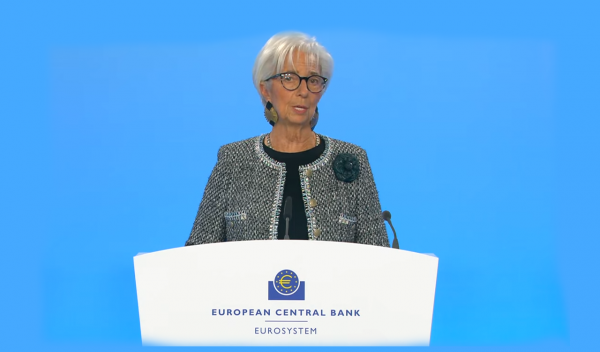
The Greek public debt seems to have “swelled” by about 50 billion euros, due to the pandemic.
The Bank of Greece emphasizes, in its interim report on Monetary Policy, that the pandemic has caused a major change in public debt calculations, which is causing changes in its profile for the coming years.
It is now estimated that in 2030 the debt / GDP ratio will be 27 points higher than the estimates made before the pandemic.
In essence, this is an additional burden of 50 billion euros. The key question, then, is whether its viability is affected, despite the fact that a debate is starting in Europe to set country limits.
Sustainability
According to the updated estimates of the Bank of Greece, the medium-term viability of the public debt remains guaranteed. However, due to reduced economic activity during the pandemic period, emergency budgetary measures
2020-22 (totaling € 37.6 billion) and additional borrowing from European resources (RRF, SURE), both public debt as a percentage of GDP and gross public financing needs have been significantly the pre-pandemic baseline forecast scenario. More specifically, the debt-to-GDP ratio is expected to reach 138% in 2030 (approximately 27 percentage points of GDP higher than pre-pandemic estimates).
At the same time, provided that cash is maintained at a high level, annual gross financing needs for the next decade will now average around 3 percentage points higher than forecast before the pandemic, but remain lower than the reference level of 15% of GDP.
According to Budget 2022, provided that the pandemic is reduced and the recovery continues, an improvement in the primary fiscal balance is foreseen according to the definition of enhanced surveillance, with a reduction in the deficit to
relation to 2021 and its formation at 1.2% of GDP. Government debt is projected to escalate to 189.6% of GDP in 2022 from 197.1% of GDP in 2021.
Favorable composition and surpluses
From the sensitivity analysis of the baseline scenario, the BoG underlines, the following key conclusions emerge: The declining dynamics of the public debt to GDP ratio is not disturbed in the medium term under adverse macroeconomic and fiscal scenarios, which is a strong indication of resilience under adverse disorders.
Read also: 20 years of euros – Greek public debt would be over 1 trillion euros, without participation in the Eurozone
This is primarily due to the favorable composition of public debt, which consists of 99% of fixed interest debt and 77% of liabilities to the formal sector, but also the long repayment period, as it has been formed in the medium-term debt relief measures.
Especially in the case of Greece, the medium-term viability of public finances is also judged – both by the markets and by the policy makers – and based on the criterion of gross financial needs. Under this criterion, the risks to sustainability under the different adverse scenarios are clearly increased, eliminating any room for relaxation of primary surplus targets.
Latest News

DM Dendias: We talk With Turkey But We Always Bring Up Their Unacceptable Positions
Second and last day of closely watched conference, entitled 'Metapolitefsi 1974-2024: 50 Years of Greek Foreign Policy', also included appearances by PM Mitsotakis, Ex-PM Tsipras and PASOK leader Nikos Androulakis, among others

Rhodes Airport Tops Fraport Greece’s Regional Airports in 2024 Performance
According to Fraport's data, more than 35 million passengers (specifically 35.2 million) were handled by Fraport-managed airports during the 11 months.

European Central Bank Cuts Interest Rates by 25 Basis Points
It is the fourth cut of interest rates by Europe’s central bank, a move expected by the markets and financial analysts leading to the rate settling at 3%.

Airbnb: New Measures Add €600 in Extra Costs for Property Owners
Property managers face an immediate administrative fine of 5,000 euros if access to the inspected property is denied or any of the specified requirements are not met.

Economist: Greece Included in the Best Performing Economies in 2024
Meanwhile, Northern European countries disappoint, with sluggish performances from the United Kingdom and Germany.

EasyJet Expands Its Routes from Athens
The airline’s two new routes will be to London Luton and Alicante and they will commence in summer 2025.

Capital Link Forum Highlights Greece’s Economic Resurgence; Honors BoG Gov Stournaras
Capital Link Hellenic Leadership Award recipient, Bank of Greece Gov. Yannis Stournaras, an ex-FinMin, was lauded for his pivotal role during Greece’s economic recovery

Tourist Spending in Greece Up by 14%, Visa Card Analysis Shows
Greece’s capital Athens emerged as the most popular destination, recording a 17% increase in transactions with Visa cards, surpassing even the cosmopolitan island of Mykonos.

Inflation in Greece Unchanged at 2.4% in Nov. 2024
The general consumer price index (CPI) posted a 0.4% decrease in November compared to the previous month

2024 Christmas Holidays: Extended Shop Hours Schedule
The 2024 Christmas Holidays extended shop hours schedule commences on Thursday, December 12 and runs until the end of the year.


![Φυσικό αέριο: Δυναμικό come back του LNG στην Ελλάδα [γραφήματα]](https://www.ot.gr/wp-content/uploads/2023/01/OT_naturalgas-90x90.jpeg)












![Fraport: Πάνω από 35 εκατ. επιβάτες στα αεροδρόμια το 11μηνο – Πτώση στη Μύκονο [πίνακας]](https://www.ot.gr/wp-content/uploads/2022/06/fraport-90x90.jpg)

























 Αριθμός Πιστοποίησης Μ.Η.Τ.232433
Αριθμός Πιστοποίησης Μ.Η.Τ.232433